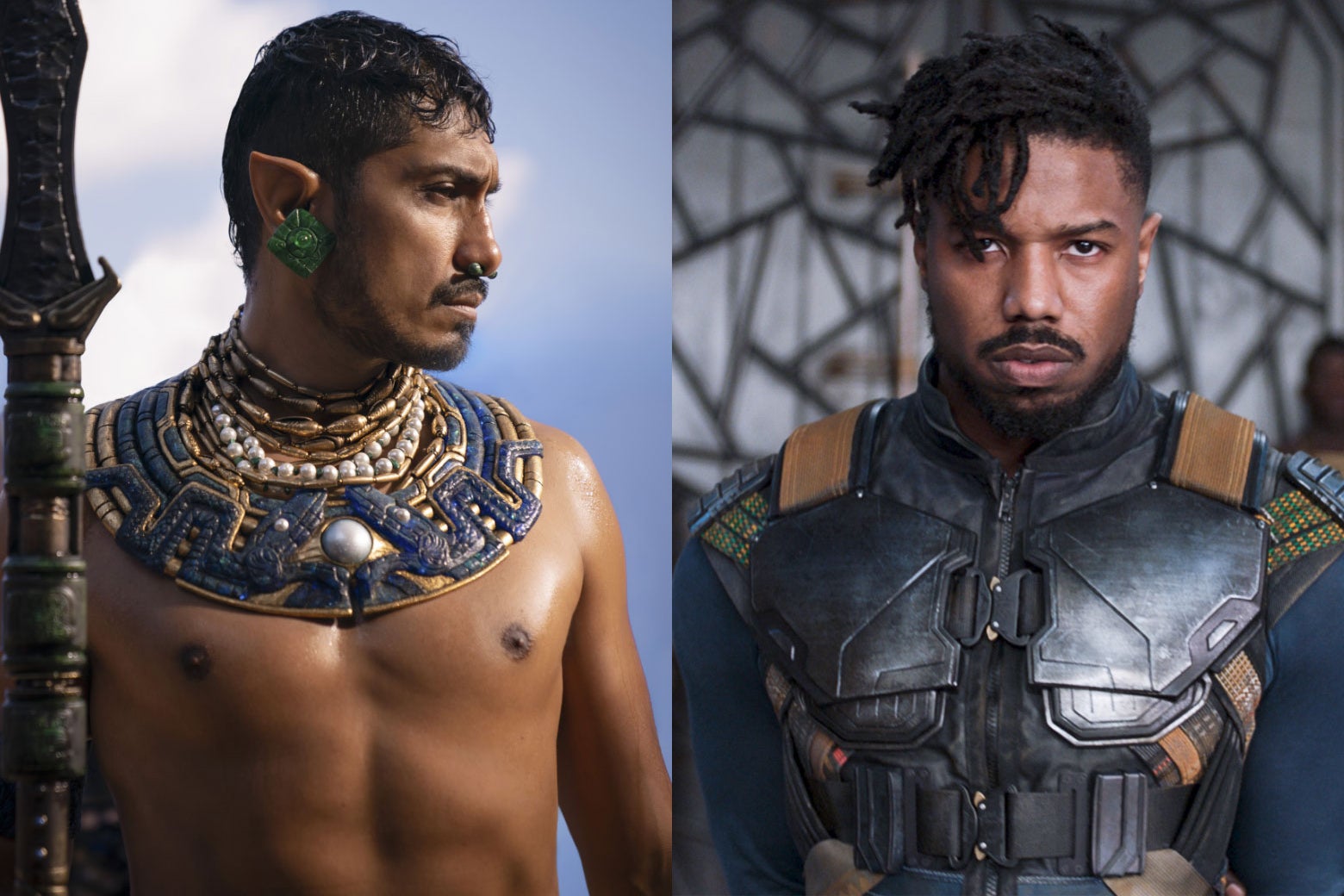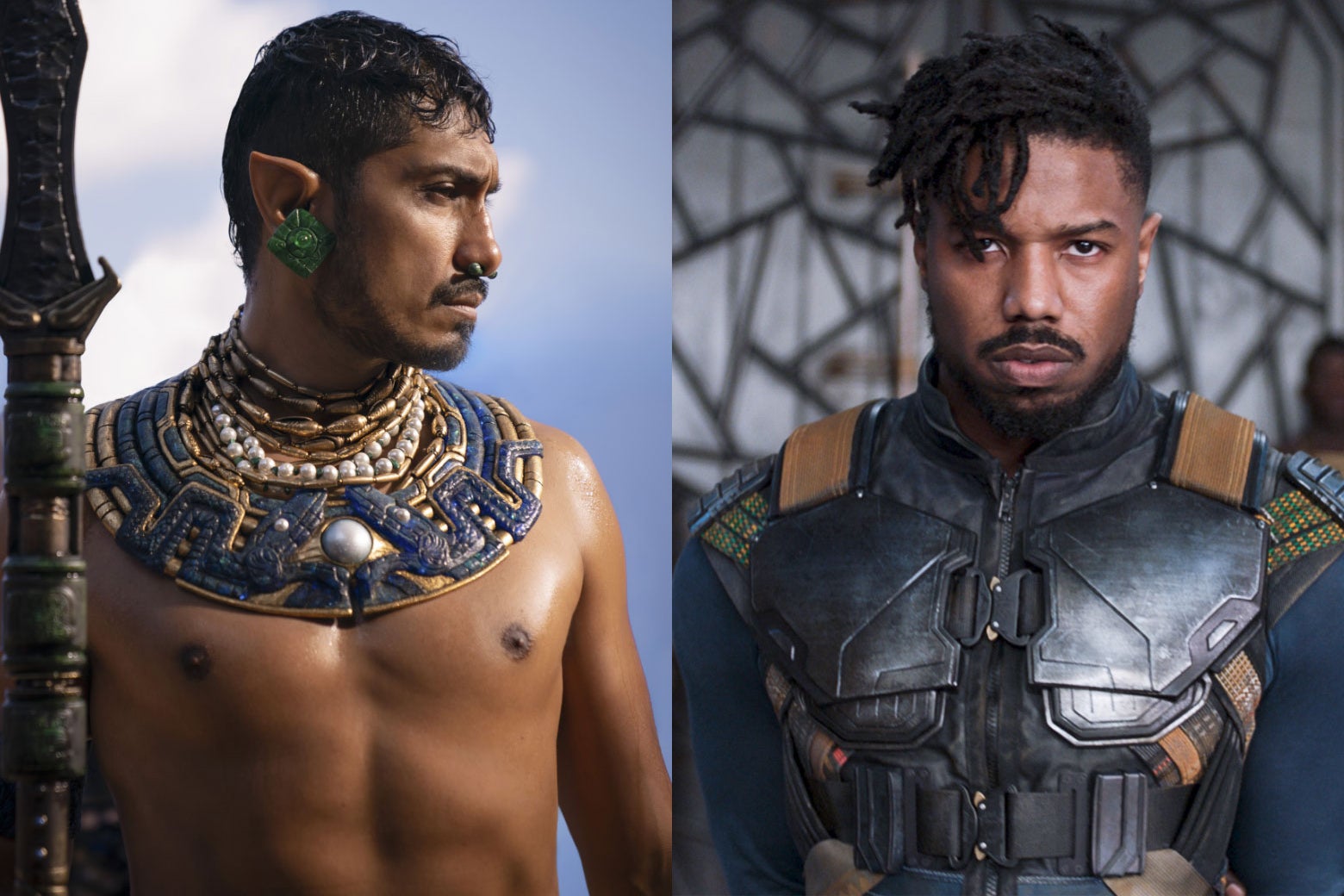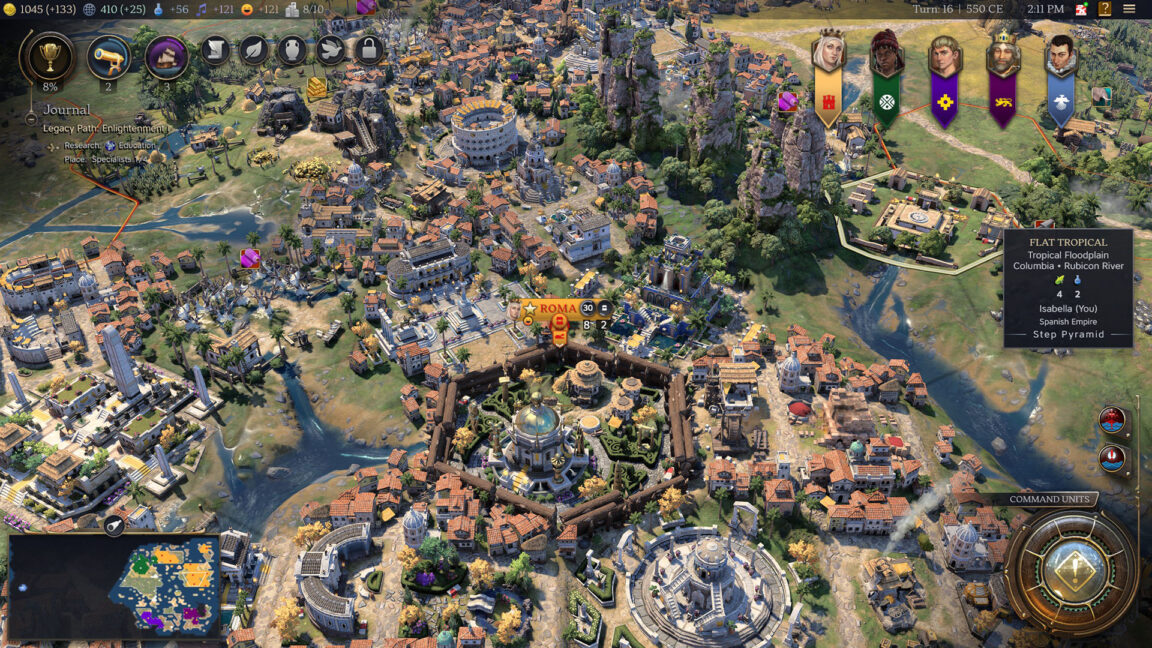Tenoch Huerta’s Namor is your new Killmonger.

Photos by MarvelStudios.
Look out, Marvel stans! A new problematic fave is in town. Marvel’s latest sequel, Black Panther: Wakanda Forever, deals with a lot of the same antagonistic forces as the first one: colonialism, Western imperialism, government intelligence operations and their all-too-common negative effects on foreign countries. Like its predecessor, Wakanda Forever picks one person to embody the fight against all of these forces, then tries to convince us that person is the villain. In the first film, it was the extremely charismatic Killmonger, played by grade-A hottie and eternal thirst-lord Michael B. Jordan. Now, proving that the Black Panther franchise has the best bad guys in the MCU, we have Wakanda Forever’s new sympathetic villain, Namor—portrayed by a man who may be the world’s next internet boyfriend, Tenoch Huerta.
Like Killmonger, Namor is hot! (Sound the alarms!) He is consistently portrayed emerging from the water, which is unequivocally an attractive thing to do, when done correctly. He strides, or flies, around practically naked, with nothing on but his super tight hoochie-daddy shorts, impressive jewelry, and winged ankles. He’s chiseled, and has a deep-ish, menacing voice. And, I should say again: He’s often wet. Though I don’t think his appeal is on exactly the same level with Killmonger’s threatening playfulness, Namor is certainly in the Marvel Bad Boys Club—in a good way.
The Black Panther franchise is a breath of fresh air within the MCU, not only because of its diversity, but also because it’s one of the only MCU films, besides the singular Civil War, that attempts to reckon with the subtextual status of the MCU as plain ol’ military imperialist propaganda. Though these reckonings in the MCU are never quite successful—Iron Man loses in Civil War, and by the end of the first Black Panther, Wakanda remains in league with the same nations the film first chastises for hindering the development of Black communities—the Black Panther films do the best job of subverting Marvel’s usual narratives.
In the first film, audiences found themselves conflicted: They deeply resonated with Killmonger’s frustration around the debilitating harm being done to Black communities outside of Wakanda, but knew that his way of solving that problem was a tad too extreme. Wakanda Forever’s conflict is just as compelling on paper, though the anti-imperialist cause Namor stands for sometimes gets bogged down in too much plot and MCU-ish world-building.
Namor’s backstory tragically embodies the ruinous effects of colonial seizure and subjugation (the way this unfolds is quite different from the comics). The Namor of the movie is a Yucatec Mayan mutant-hybrid who rules the vibranium-rich underwater realm of Talokan (changed from Atlantis in the comics to a name inspired by the Aztec city of Tlālōcān). Referred to by the Talokanil people as Ku’ku’lkán, or the Feathered Serpent God (a real-life Mesoamerican deity), Namor has experienced some pretty rough shit.
Namor’s origin story begins with colonizers bringing smallpox to his people. They attempt to strengthen themselves against the sickness by ingesting a vibranium-infused plant that turns them into the sea-dwelling Talokanil. Because his mother was pregnant at the time of the transformation from human to Talokanil water-breather, Namor ends up becoming an immortal mutant-hybrid who can also breathe air. After a childhood spent with the portion of the group who had escaped underwater, when Namor goes to bury his mother on land, he rises to the surface to find the remainder of his people suffering the atrocities of slavery and captivity.
This is quite the sympathetic origin story. When you step back and think about it, the best of us would want to watch the world burn after that. But, as Black Panther: Wakanda Forever unfolds, with the hunt for vibranium afoot amongst the world’s most powerful nations, Namor wants to stop the surface world from pillaging Talokan for all of the highly valuable metal—which he knows, and we know, they will. However noble his cause, his solution is to wage war against every nation on the land—hopefully, with Wakanda on his side. We both know, and don’t know, whose side to be on.
In stark similarity to his predecessor, Killmonger, Namor’s whole beef is, at its heart, deeply understandable. The Black Panther franchise succeeds in making sympathetic heroes by first stating a problem which we all agree is a problem, one underrepresented in blockbuster action films, and then building an anti-hero to exact vengeance for it. That’s the special ingredient, but the cherry on top is making them hot.
Other superhero movies might try to get us to be sympathetic to their villains, and there definitely are plenty of garden-variety hot baddies to watch, but the two never align as strongly as they do when it comes to those that challenge Wakanda. Sorry if it makes me basic, but this means that if we’re grading the MCU villains, Black Panther is setting the curve. Some might think Thanos is hot, but not only do I disagree, I also disagree with wiping out half of the world as a way to solve overpopulation? Has he never heard of equitable redistribution? And Jake Gyllenhaal’s Mysterio? Total hot baddie. Also totally off his rocker.
It’s an ouroboros for sure: Is it my sympathy toward Namor’s cause that makes him hot, or is it his hotness that makes me more sympathetic? The answer is both! There’s a part of us as an audience that has to reckon with that, sure. But the guy has a point! And guys with points are hot! Most times, anyway. Make no mistake, Namor is definitely the negging type, and would put you through the wringer if you actually dated, with his short temper, astounding grudge-holding capabilities, and general impulse to wage war with the whole world. (You can put extra emphasis on that last part.) But at least he’s got conviction. And is wet.



![BUSTED! Michigan Woman Discretely Records and Catches Canvasser Telling Her It’s Okay Register to Vote In TWO DIFFERENT Counties: “You don’t have to live down here to vote” [VIDEO]](https://www.thegatewaypundit.com/wp-content/uploads/2025/01/gina-gp-1200x630.jpg)






